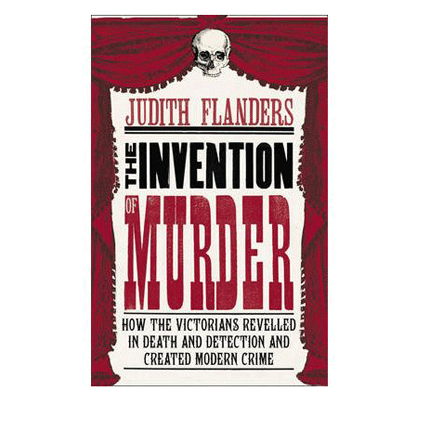The Invention of Murder, By Judith Flanders
Murders and murderers fascinated 19th-century Britons – and fired the creative imaginations of hack journalists and great novelists alike

George Orwell's 1946 essay "Decline of the English Murder" opens on a "Sunday afternoon, preferably before the war", with paterfamilias, sofa-tethered in the aftermath of his outsize lunch, riffling through the pages of the News of the World.
What is it that he wants to read about? "Naturally," Orwell decides, "about a murder." There follows a loving précis of "the murders which have given the greatest amount of pleasure to the British public, the murders whose story is known in its general outline to almost everyone and which have been made into novels and rehashed over and over again by the Sunday papers", and a pointed little analysis of what might be called the psychology of sensationalism.
Orwell's assumption that murders "give pleasure" – at any rate to the millions who approach them vicarously – lies at the heart of Judith Flanders' account of the mid-Victorian romanticisation of serious crime, The Invention of Murder: How the Victorians Revelled in Death and Detection and Created Modern Crime.
On the one hand, it is an infallible guide to stylisation's onward march, and the means by which something individual and sordid can be "classed up", as she puts it, to suit the popular taste. On the other, it is a penetrating study of the way in which murder can take hold of the creative imagination, a process that involved not only the hack writers of penny bloods (whose origins Flanders dates to 1844) but also such sober chroniclers of the mid-to-late 19th-century scene as Thackeray, Mrs Gaskell and Thomas Hardy.
As Flanders points out, the pre-Victorian public's newfound obsession with murder – a fixation that led to 30,000 people traipsing through the lecture hall in which the corpses supplied by Burke and Hare were dissected – stemmed from its rarity value. In 1810, only 15 murders were recorded as having been committed in the whole of the UK – or 0.15 per 100,000. (By comparison, the current statistic is 1.41.) The few cases that led to a conviction – Maria Marten, who went to her death in the Red Barn; the notorious John Thurtell, who bludgeoned his associate William Weare – took on an indefinable glamour, whose appeal to the voyeurs who heard about them in ballads or watched them on stage relied on straightforward misrepresentation.
Flanders is particularly good at showing how the stylising process set in. Maria Marten's assailant, William Corder, was swiftly transformed from lowly tenant farmer to well-heeled squire; Maria herself, the bearer of three illegitimate children, was re-imagined as a "fine young woman". Ellen Hanley, a wretched 15-year-old Irish orphan murdered by a retired lieutenant of the Marines, became the decidedly upmarket "Colleen Bawn". Some of the worst re-inventions involved the 18th-century murderer Eugene Aram, taken up by everyone from William Godwin to Edward Bulwer-Lytton and re-emerging as a tormented sinner whose crime is somehow mitigated by his philosophical gloss.
Significantly, the public's absorption in crime ran parallel with the development of a proper police force (created by Sir Robert Peel in 1829) and, a bare 13 years later, the first "Detective Department". The professionalisation of law enforcement was noted by Dickens, whose private detective Nadgett in Martin Chuzzlewit (1844) soon gives way to Bleak House's far more resourceful Inspector Bucket, supposedly based on the Department's Charles Field.
Going on to examine the great mid-century causes célèbres (baby farms, burial clubs whereby conniving parents had their children insured prior to bumping them off), the baleful consequences for criminal justice of a sensation-hungry press and the panics about everything from garrotters to poisoners, Flanders eventually diagnoses this fixation as an essential signpost on the Victorian age's route to modernity.
Some of her sharpest insights are reserved for classic Victorian literature's preoccupation with the subject matter of penny dreadfuls and travelling puppet shows. She notes, for example, that Thackeray in Vanity Fair has Becky Sharp advised by a law firm whose name incorporates three prominent murderers of the period, and suggests that Hardy, when remembering the execution that gave him the idea for Tess of the D'Urbervilles, may actually have been resurrecting his childhood memories of the execution of the notorious Mrs Manning in 1849.
Though full of high-grade period detail, culled from sources as varied as Madame Tussaud's effigies and stage-managers' diaries, The Invention of Murder's chief conclusions look more elemental. "More blood, much more blood," one Victorian publisher is said to have harangued the hack journalists who devilled for him. Brian De Palma's special effects men got much the same instructions a century later.
Join our commenting forum
Join thought-provoking conversations, follow other Independent readers and see their replies
Comments